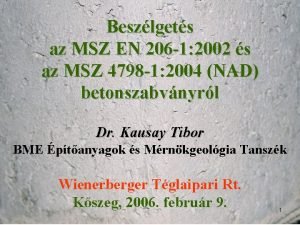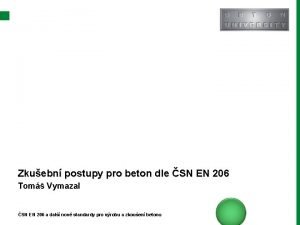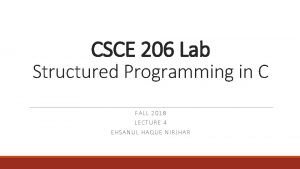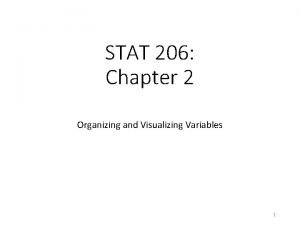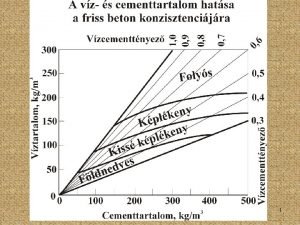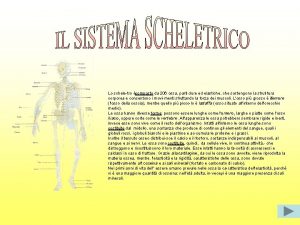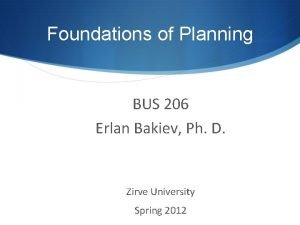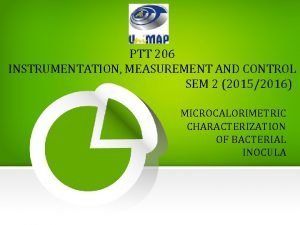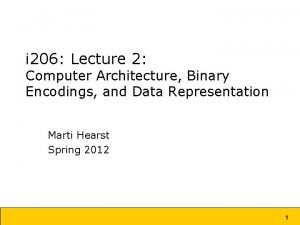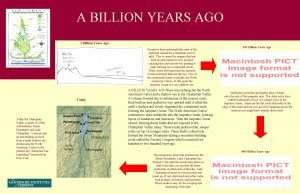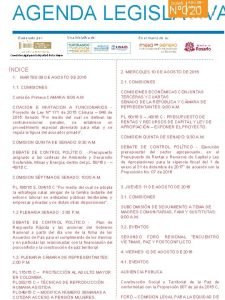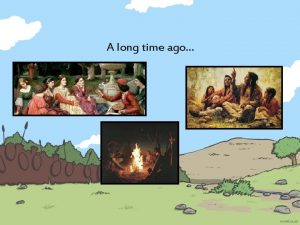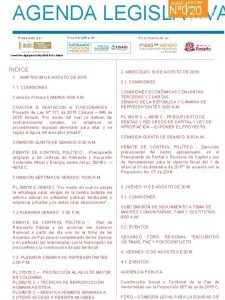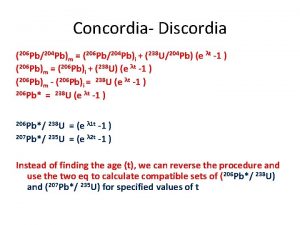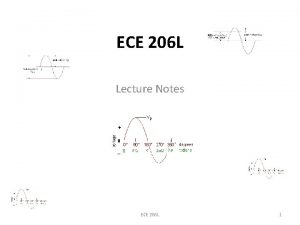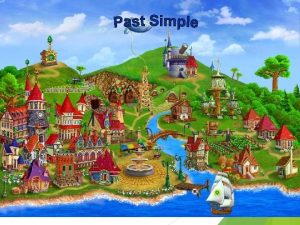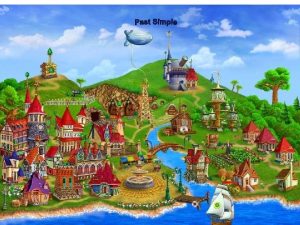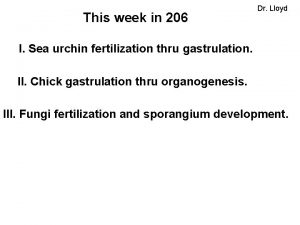This week in 206 From 1 week ago



















- Slides: 19

This week in 206 From 1 week ago: Any live chickens? Fungi reproductive structures. I. Escherichia coli plasmid transformation and gene expression. antibiotic selection, bioluminescence, melanins II. Arabidopsis thaliana molecular genetic analysis. mutants, transgenics, gene expression

Model genetic organisms Used to study processes in development, physiology, behavior, reproduction, disease, gene regulation, signal transduction, etc. Traits of models. EASY + CHEAP Limitations on space, time, funds.

Model genetic organisms Used to study processes in development, physiology, behavior, reproduction, disease, gene regulation, signal transduction, etc. Traits of models. EASY + CHEAP Small Lots of progeny Fast generation Inexpensive culture Simple Good genetics (diploid or haploid, mutagenesis, crossing) Relevant-normal or does something interesting or useful No “societal” problems Small genome-(sequenced) Transformable

Examples of model genetic organisms.

Examples of model genetic organisms. Escherichia coli (and lambda) Saccharomyces -Baker’s Yeast Drosophila -Fruit fly Mus -Mouse Danio -Zebra fish Xenopus -African Clawed frog Caenorhabditis -Nematode Dictyostelium -Slime mold Arabidopsis Genetics had a huge resurgence in the past several years. Biochemistry and molecular biology can’t answer all the questions. Functional genomics.

Examples of model genetic organisms. Escherichia coli (and lambda) Arabidopsis thaliana Very small lots of progeny short generation (30 days) Smallest genome (125 million bases) Easy to grows under many conditions Easy to mutate and do genetics Easy to transform. Has roots, leaves, stems, flowers, fruits, seeds, etc.

Organism estimated size estimated gene number average gene density chromosome # Homo sapiens (human) 2900 million bases ~30, 000 1 gene per 100, 000 bases 46 Rattus norvegicus (rat) 2, 750 million bases ~30, 000 1 gene per 100, 000 bases 42 Mus musculus (mouse) 2500 million bases ~30, 000 1 gene per 100, 000 bases 40 Drosophila melanogaster 180 million bases (fruit fly) 13, 600 1 gene per 9, 000 bases 8 Arabidopsis thaliana (plant) 125 million bases Zea mays (corn) 5000 million bases Oryza sativa (rice) 565 Caenorhabditis elegans (roundworm) 97 million bases Saccharomyces cerevisiae 12 million bases (yeast) 25, 500 ~25, 000 1 gene per 4000 bases 5 1 gene per 200, 000 bases 10 1 gene per 23000 bases 12 19, 100 1 gene per 5000 bases 6 6300 1 gene per 2000 bases 16 ~25, 000 Escherichia coli (bacteria) 4. 7 million bases 3200 1 gene per 1400 bases 1 H. influenzae (bacteria) 1. 8 million bases 1700 1 gene per 1000 bases 1

Macdonald Stein Sisson Iyer Chan Appling Paull Fischer Johnson Jayarrum Stevens Saccharomyces Atkinson Drosophila Gottlieb Arabidopsis Browning Juenger Sung Linder Roux Huq Brown Chen Lloyd Mehdy

Mutation-change in DNA sequence. Can lead to a change (usually loss) in gene expression. Ser Glu Asp Tyr Val Tyr AGC GAG GAC TAT GTT TAC G Deletion of A Base change T G Ser Glu Asp Stop AGC GAG GAC TAG GTT TAC G Truncation of protein. Ser Gly Thr Met Phe Thr AGC GGG ACT ATG TTT ACG Codon Frameshift changes aa sequence. Other mutations include insertions, inversions, translocations. Mutagens- chemical, x-ray, UV, sloppy polymerase.

Wild type (normal) Arabidopsis trichome mutants

Gene organization and expression. DNA Promoter gene X regulation RNA “Central Dogma” Protein Coding region gene X protein aa sequence Transcriptional fusions Strong promoter misregulation Change expression pattern of protein X by changing promoter Coding region gene X protein aa sequence Observe expression pattern of promoter X by fusing to reporter gene Promoter gene X regulation Reporter gene (GUS) Xgluc indigo Basic tools to study gene function and expression in “model genetic organisms”

Where is a gene expressed? What does the gene control? Transgene examples Gene expressed in trichomes. Overexpressed gene increases trichome number.

GAATTC CTTAAG Molecular Biology and Genetic engineering With Plasmids Eco RI Restriction enzymes or endonucleases Cut 4 to 6 bases mostly palindromes (dyad symmetry). AATTC G Gene X (or any DNA) G CTTAA DNA ligase knits strands together to make G AATTC CTTAA G G CTTAA AATTC G Bioluminescence AATTC circle. G G AATTC CTTAA G Sticky ends Melanin genes AATTC G Complementary bases G CTTAA GUS gene Betalactamase Transform E. coli G CTTAA

Penicillin Ampicillin Beta lactamase cleaves lactam ring.

Restriction Endonucleases part of Restriction System Of most bacteria. Bacterial virus E. coli B B E. coli C is said to have a Restriction System which Restricts the growth of B. E. coli B E. coli C has an Endonuclease That cleaves B B Most bacteria have some sort of restriction system. Eco R 1 Escherichia coli restriction 1 Bam H 1 Bacillus amyloliquifaciens H 1 Bgl 2 B. globigii 2 Hundreds have been discovered and are commercially available. GAATTC CTTAAG GGATCC CCTAGG AGATCT TCTAGA

Agrobacterium tumefaciens crown gall disease TI plasmid tumor inducing plasmid Left border plant oncogenes Right border Plant hormone biosynthesis Engineer oncogenes out--desired genes in. Left border Gene of interest Right Selectable Marker border Kanamycin Resistance Transferred DNA - TDNA Transform plant.

Genetically engineered products. Flavr-savr tomato--altered senescence gene. turn red on vine but don’t soften. 1 st commercial transgenic crop product. Insect resistance--Bacillus thuringiensis insect toxin gene. Bt cotton, corn, soybean, etc. Bollgard® Yield. Gard® Herbicide resistance--EPSP synthase-aromatic amino acid. Roundup Ready® Roundup-ready cotton, etc. Companies rejecting GMO--Frito Lay, Gerber, Heinz, Seagram, Mc. Donald’s


Human single gene traits. 1. A. Hair between 1 st and 2 nd knuckle. B. No hair ---- 2. A. Widow’s peak. B. No widow’s peak. 3. A. Detached ear lobe. B. Attached ear lobe.


